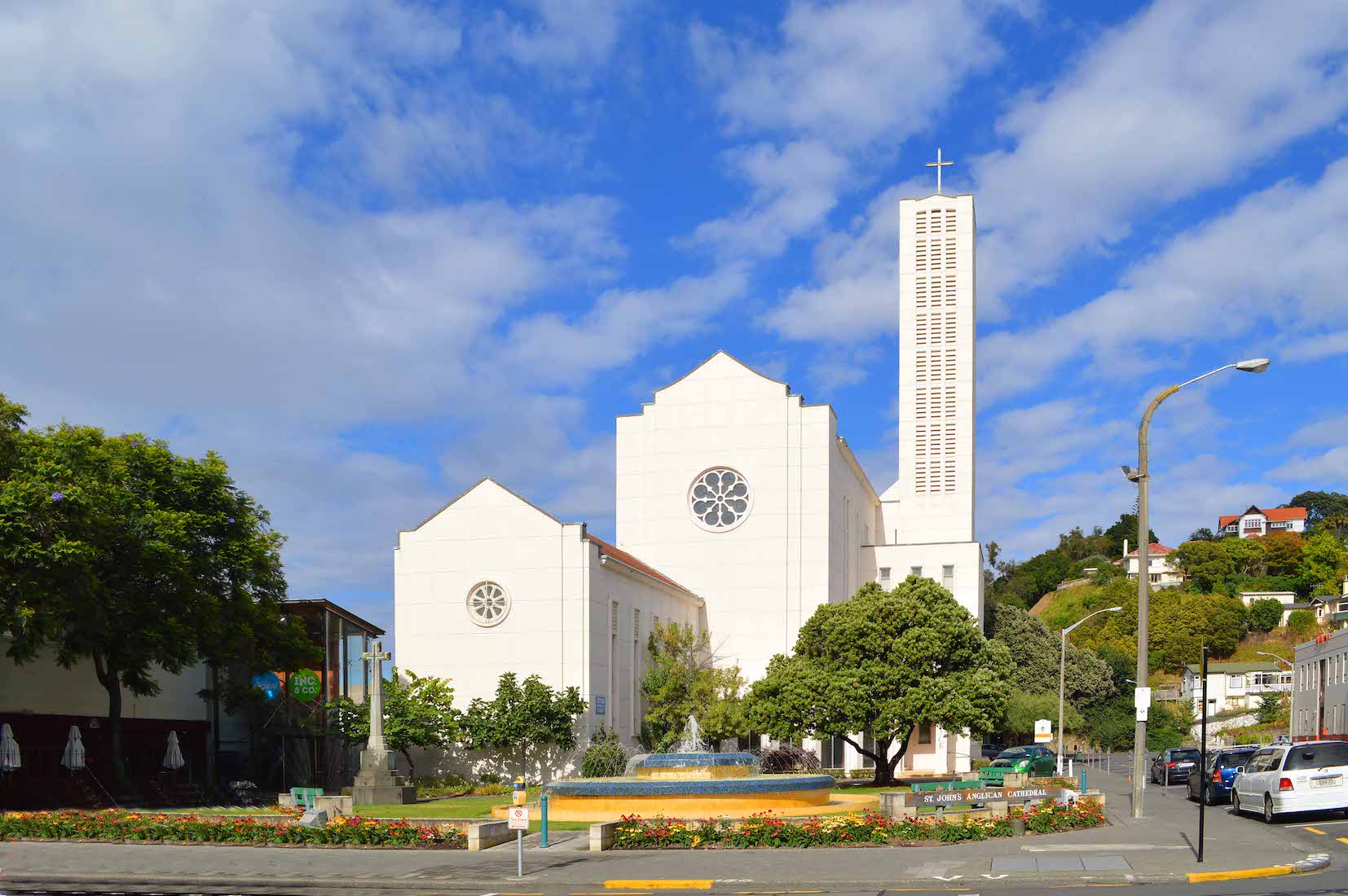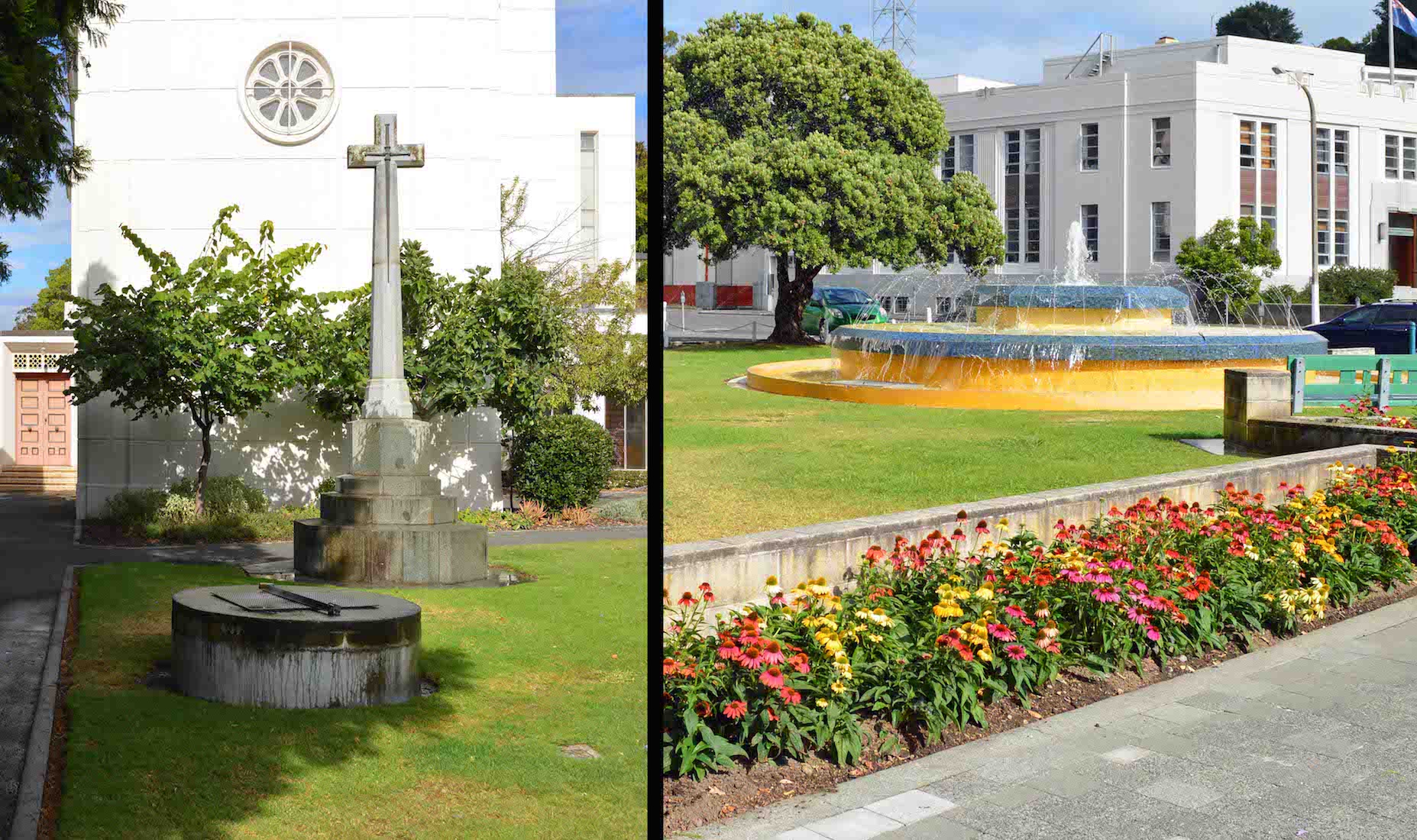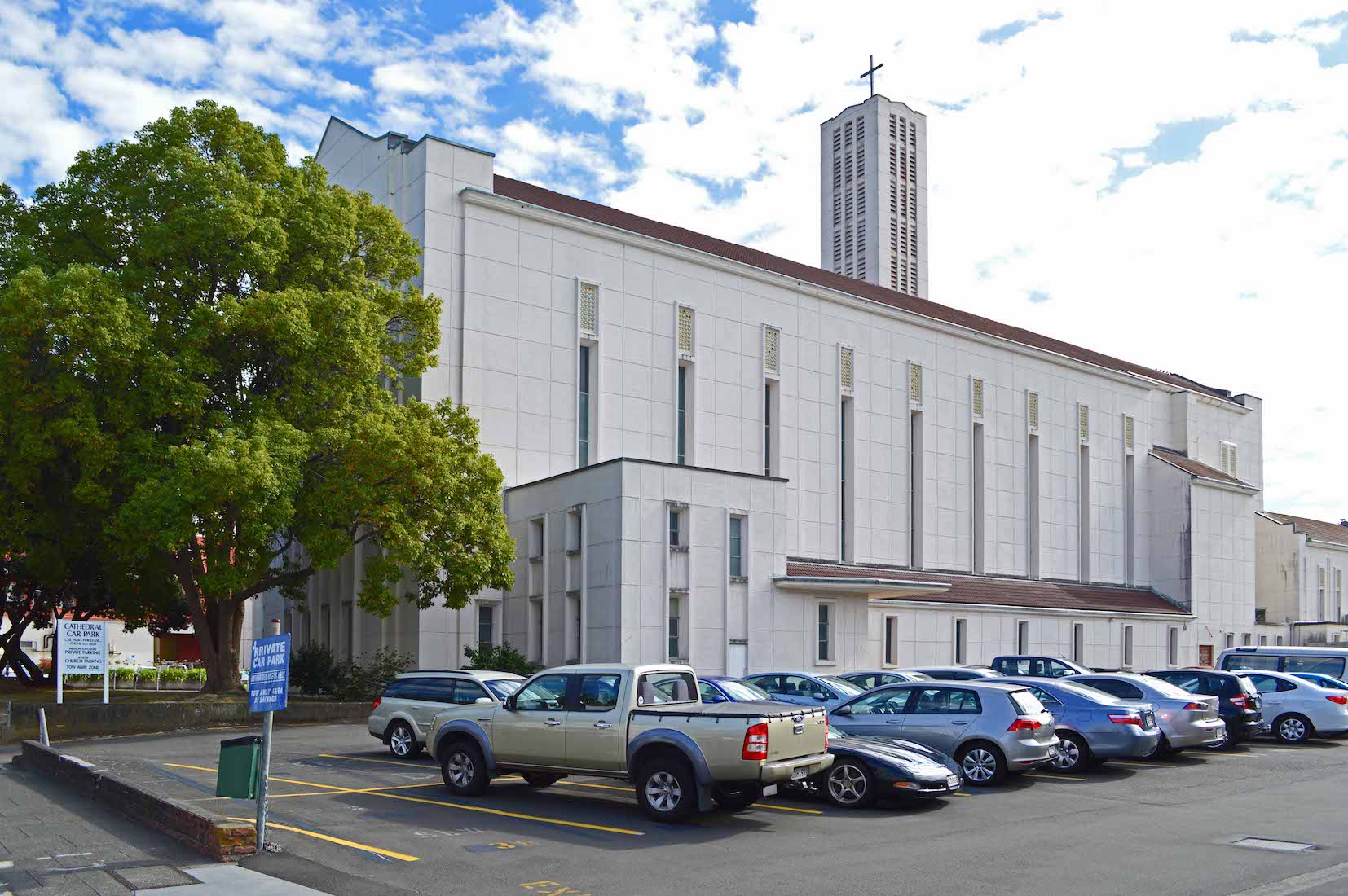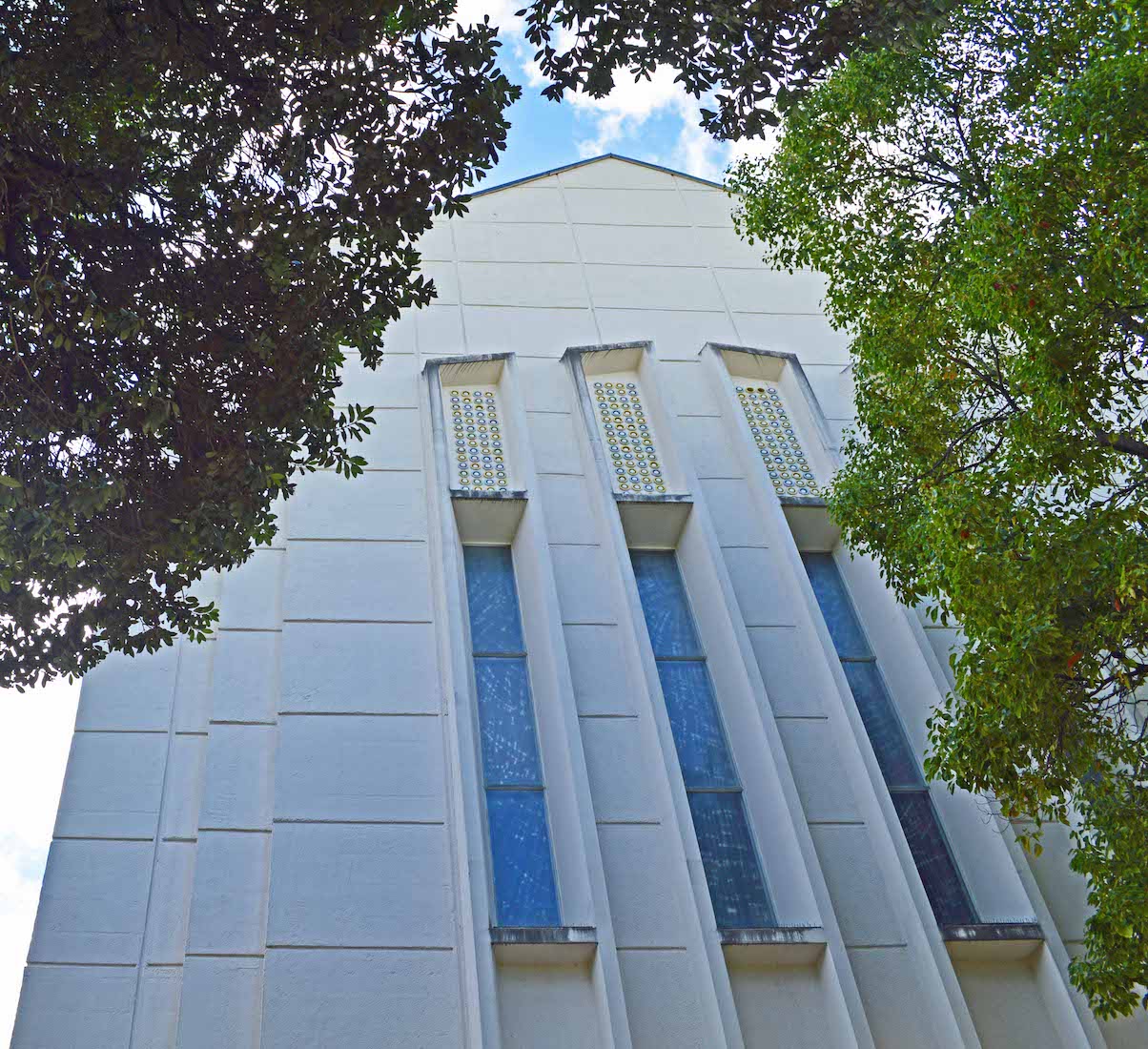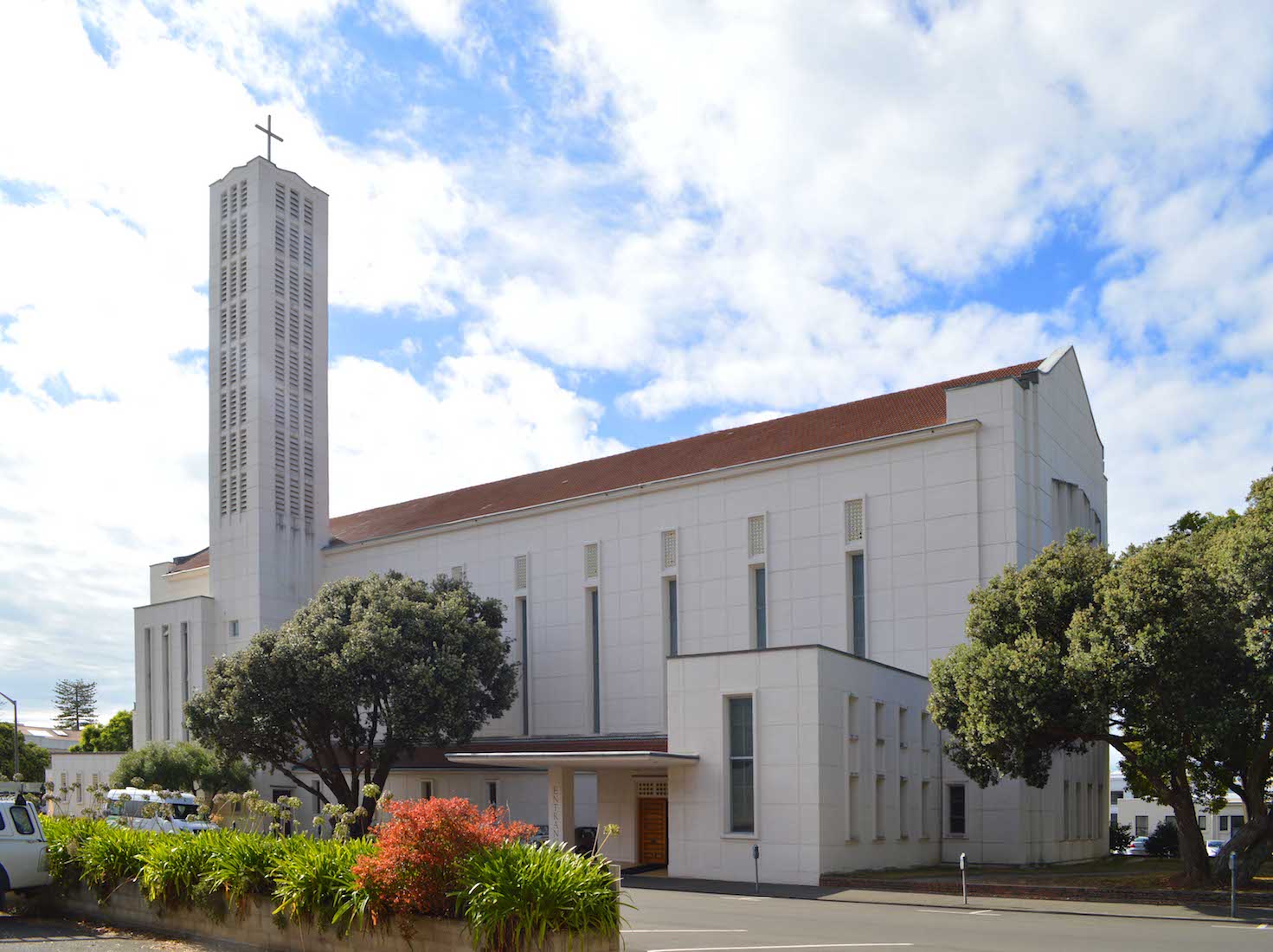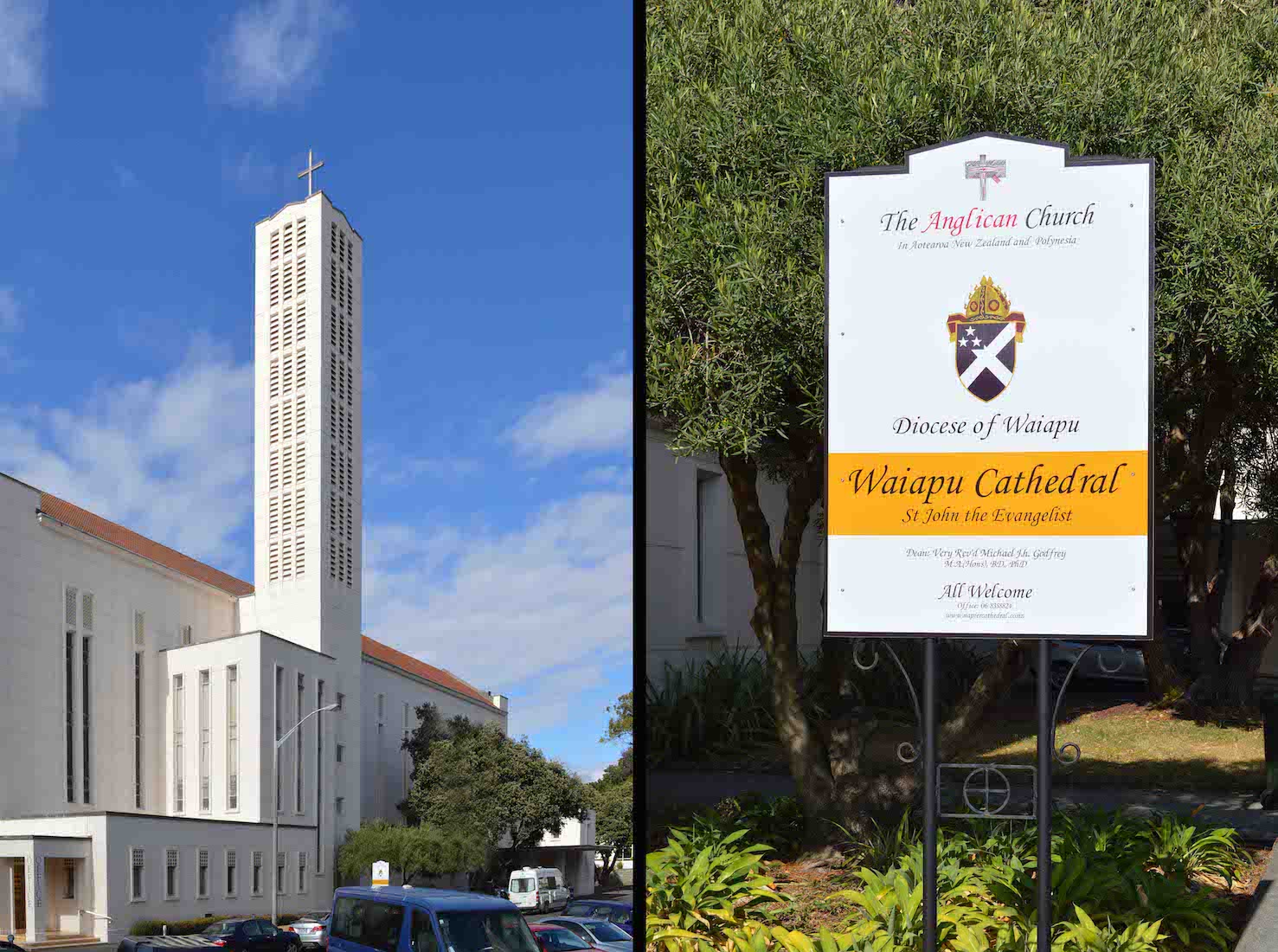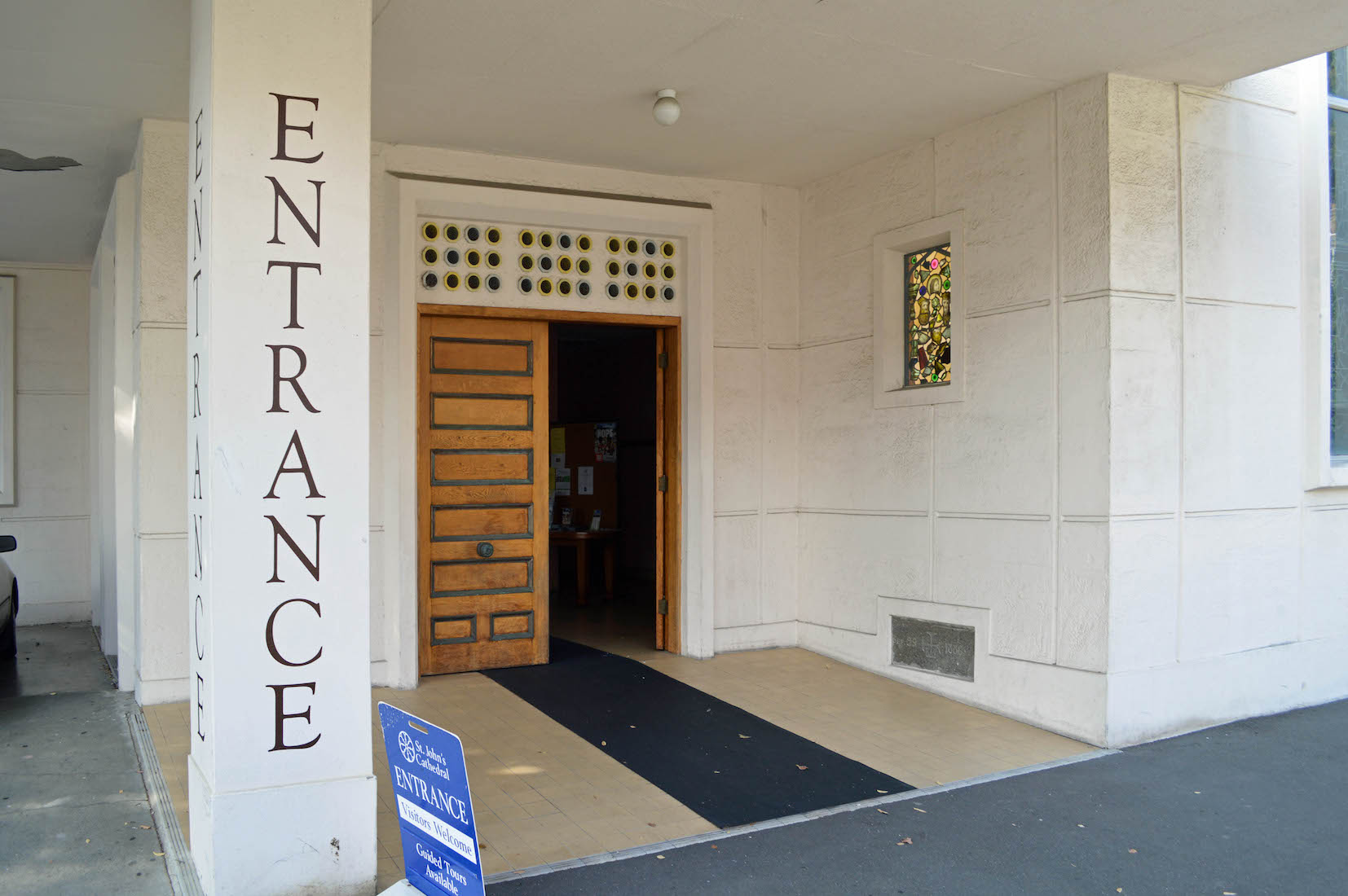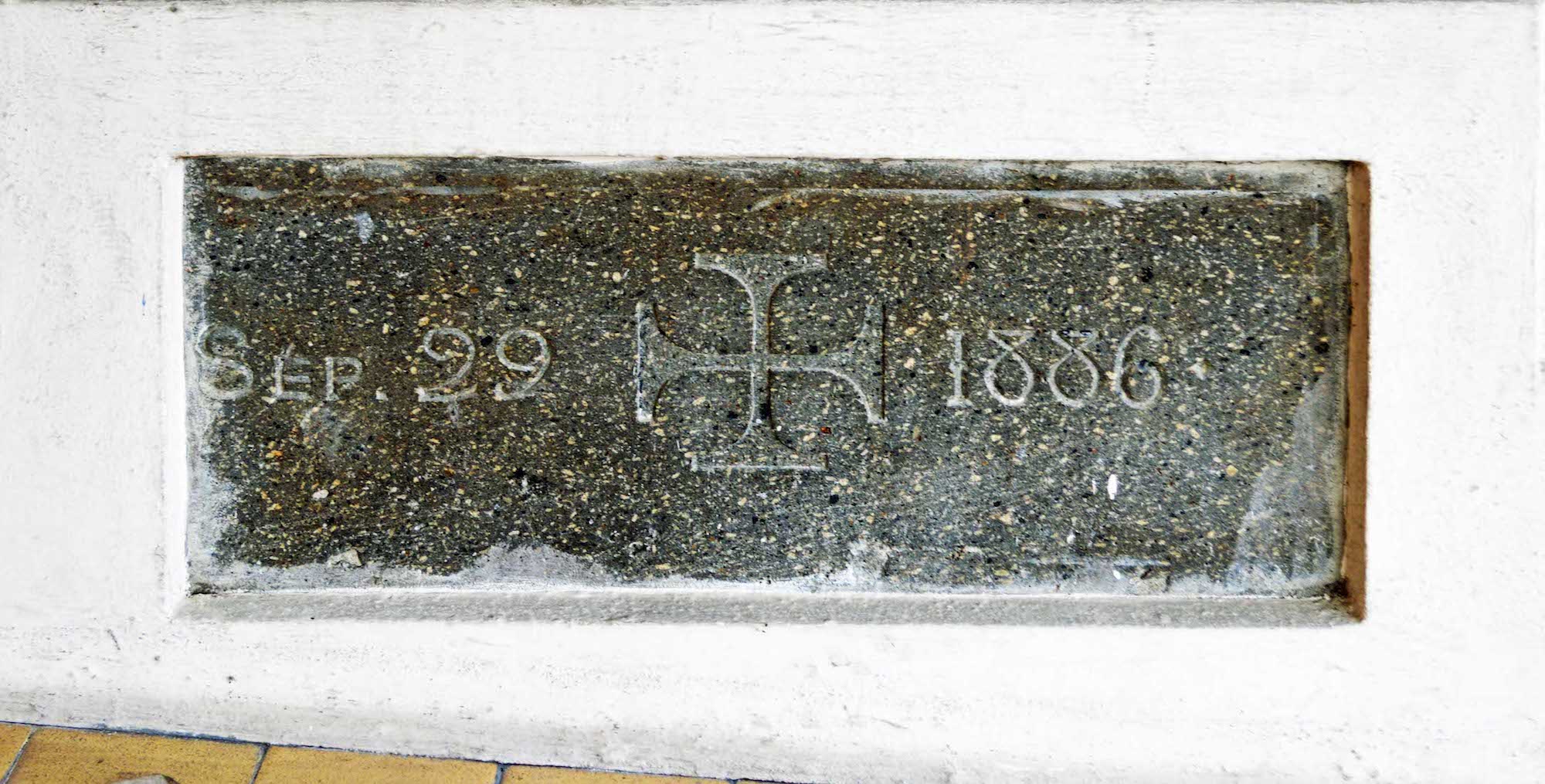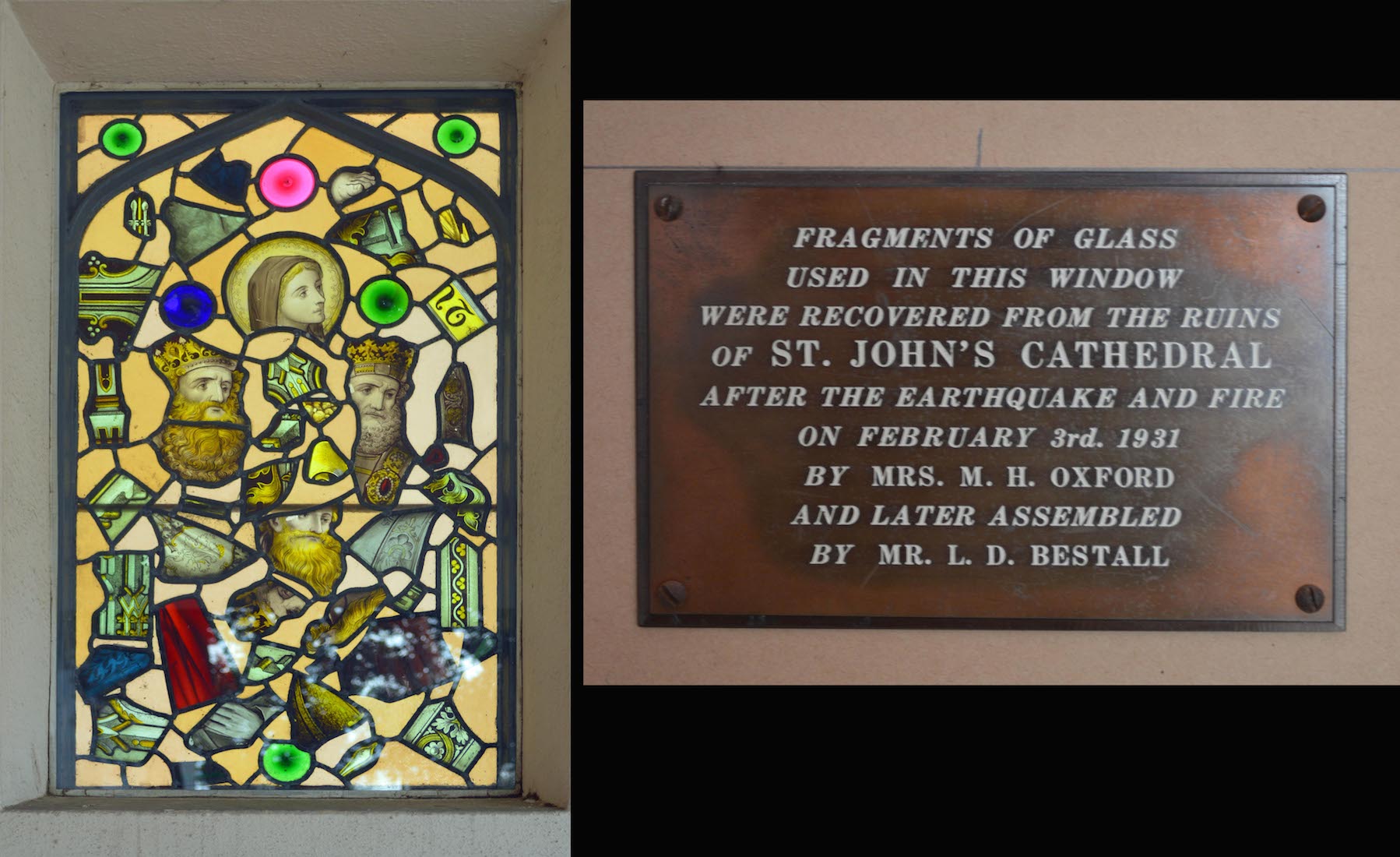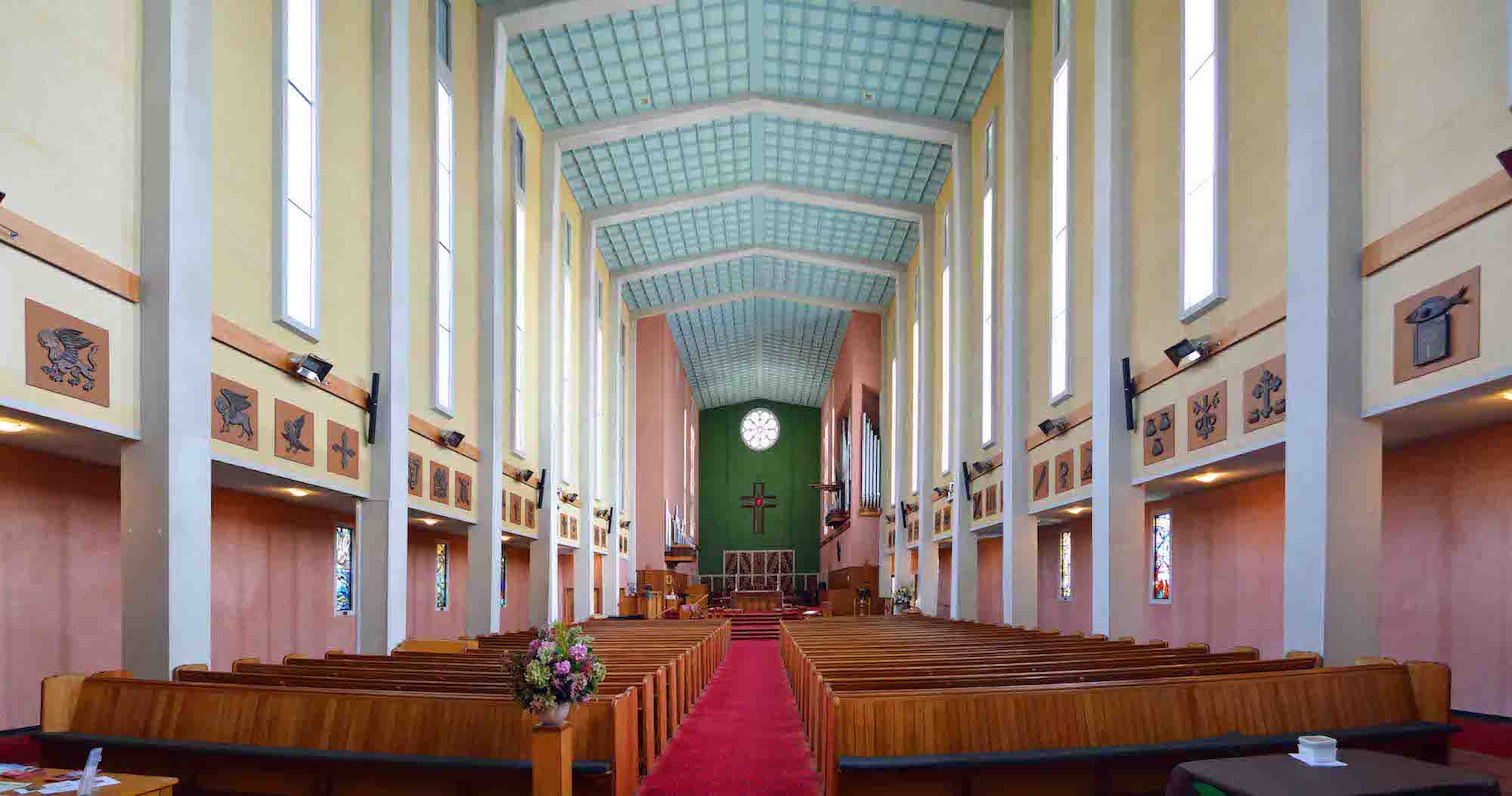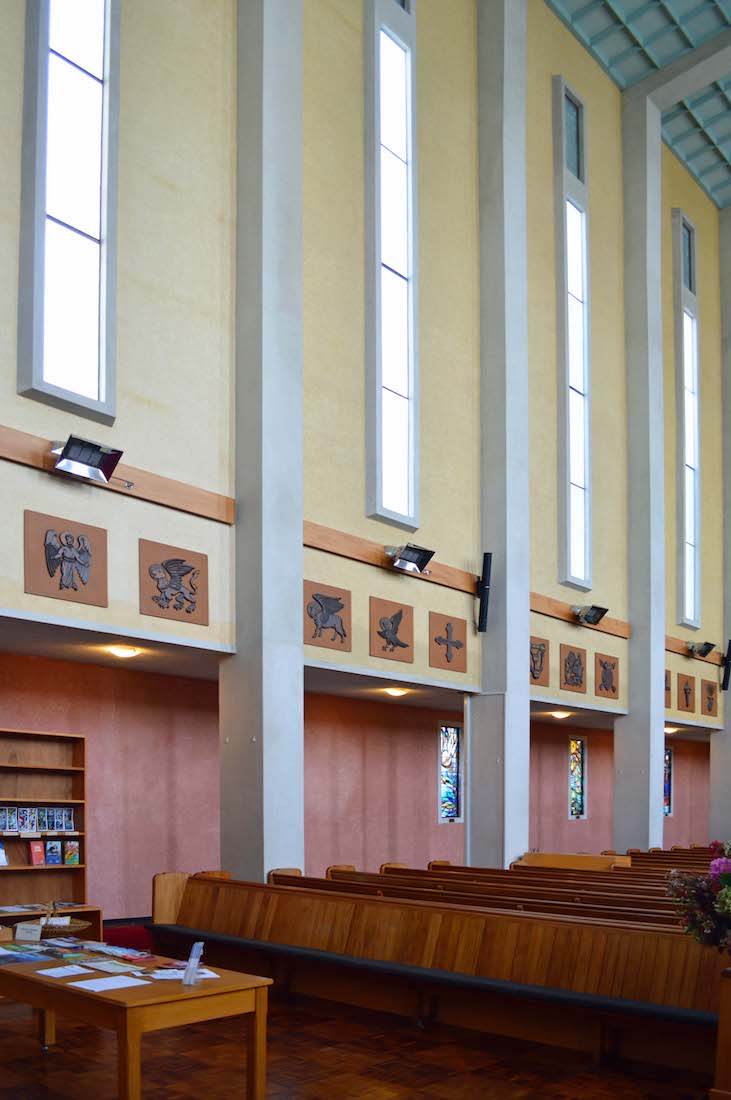
Waiapu Cathedral (of St John the Evangelist) lies alongside Browning Street, Napier. If we think of Browning Street as running essentially east-west, then the geographical and liturgical directions of this Cathedral can be taken to coincide. PLAN
2. WAIAPU CATHEDRAL
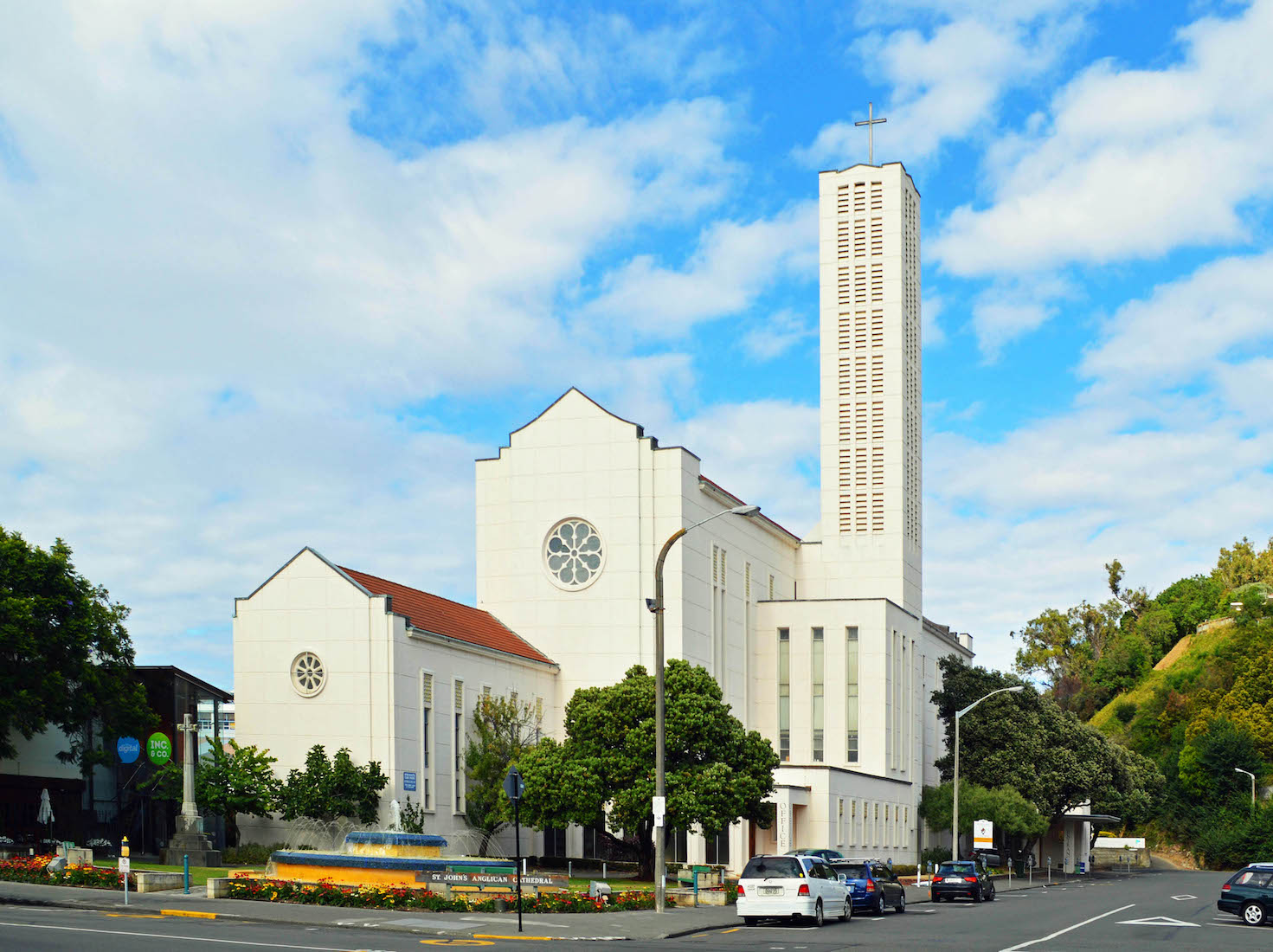
This present Waiapu Cathedral building was first dedicated on 24th February 1960. Its simple outline stands up bravely as it rises behind the pretty Memorial Garden in front.
3. EAST VIEW
In the Memorial Garden, a Memorial Cross stands at left, and a circular fountain at right. This Cathedral is the most eastward in the world, and therefore, the first upon which the sun rises each day.
4. MEMORIAL GARDEN
In the Garden stand the Cross in memory of those who fell in WWI and an illuminated fountain presented by the Mayor and Mayoress of Napier, Mr and Mrs Peter Tait (later Sir Peter and Lady Tait) in 1965.
5. SOUTH EAST VIEW
The present Cathedral is built of concrete and has a total external length of of 240 feet and a width of 59 feet; the height of the ridge is 71 feet; and the total seating capacity is 1100.
6. SOUTH WALL
The Cathedral claims to be the only cathedral in New Zealand which replaces a former one. Unfortunately, this honour may be shortly lost to Christchuch ... .
7. WEST WALL
Behind a screen of trees, the West wall rises up rather abruptly, displaying its four narrow panel windows.
8. NORTH WALL
From this viewpoint, we look directly at the main entry of the Cathedral. Just seven years after its dedication, the Cathedral had been fully paid for, the total costing being $412,000. The new Cathedral was consecrated later in the same year.
9. NAME
The original Cathedral carried the name of St John the Evangelist. Waiapu is the name of the diocese – one of the 13 NZ Anglican dioceses. The Diocese covers the area around the East Coast of the North Island, including Tauranga, Taupo, Gisborne, Hastings and Napier. It is named for the Waiapu River.
10. TOWER AND SIGN
The bell tower appears to contain a chime-sized instrument or collection of 8 bells installed in 1959 with bells made by Taylor. A Cathedral bell was tolled 80 times on 3rd February 2011 as part of the Napier City's commemoration of the 80th anniversary of the Hawke’s Bay earthquake.
12. FOUNDATION STONE
The foundation stone commemorates the beginning of the first St John’s Cathedral, and survived the earthquake. It was laid by the second Bishop of Waiapu, Edward Craig Stuart. The year is interesting, because 1886 was the year Mt Tarawera erupted, covering the North Island and beyond with ash. [1]
13. HISTORIC WINDOW
As the plaque relates, fragments of of glass from the destroyed original Cathedral were carefully assembled into this window. I am reminded (in a small way!) of the reconstruction from fragments of the West window of Winchester Cathedral in England, after the original was destroyed by Cromwell.
14. FOYER
The foyer window shows the Nativity. It was one of a pair being installed in the old Cathedral in 1931. Still in its packing, it survived. Its partner, depicting the Adoration was destroyed, along with the old Cathedral. The banner carries symbols of the constituent parish churches.
16. NAVE NORTH WALL
The large windows are clear glass, giving the Cathedral a bright, light feeling. Below is a set of stained glass windows, and between, a row of interesting brown and black plaques carved by Edwin Zambra between 1979 and 1981. What can these be?
17. PLAQUES I
Some of the plaques represent various saints. So here in order: St John the Baptist (words ‘Lamb of God’, St Mary Magdalene (ointment and tears), St Stephen (stones, and palm of victory), St Barnabas (roses worn on his feast day), St Matthew (Divine man), and St Mark (winged lion). [10]
18. PLAQUES II
Continuing ... St Luke (winged ox), St John (rising eagle), St Michael (cross with trefoiled ends), St Faith (virgin martyr, C3rd), St George (slaying dragon) and St Augustine of Hippo (pierced heart => devotion to Christ).
19. PLAQUES III
Continuing ... St Augustine of Canterbury (cross, pall and lily), St Aidan (torch => his ability to shed light), St Bede (Venerable, translated Bible to English), St Margaret of Antioch (legend of dragon), St Francis of Assisi (stigmata), All Saints (crown, sanctus = holy).
20. PLAQUES IV
Continuing ... Nativity (Glastonbury thorn bush), Epiphany (star), Crucifixion (crown of thorns, nails), Resurrection (sunrise), Ascension (chariot wheel and flames), Oikoumene (World Council of Churches and ecumenical movement).


